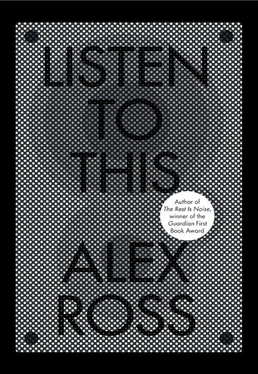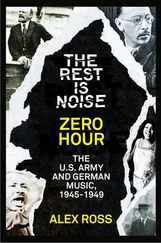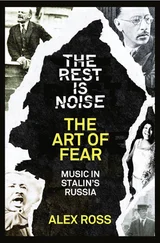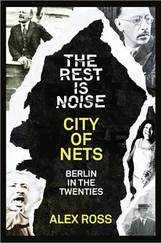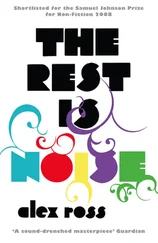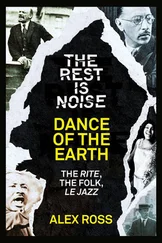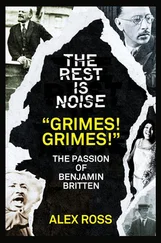In the twentieth century, time’s arrow again bent into a cycle, to follow Karol Berger’s metaphor. While some composers pursued ever more arcane musics of the future, others found a new thrill in archaic repetition. Chaconne and related forms returned to fashion. Schoenberg, hailed and feared as the destroyer of tonality, actually considered himself Bach’s heir, and his method of twelve-tone writing, which extracts the musical material of a piece from a fixed series of twelve notes, is an extension of the variation concept. (So argued Stefan Wolpe, an important Schoenberg disciple, in an essay on Bach’s Passacaglia in C Minor.) “Nacht,” the eighth song of Schoenberg’s melodrama Pierrot lunaire, is subtitled “Passacaglia,” its main theme built around a downward chromatic segment. The revival of Baroque forms quickened after the horror of the First World War, which impelled young composers to distance themselves from a blood-soaked Romantic aesthetic. The circling motion of the chaconne and the passacaglia also summons up a modern kind of fateful loop—the grinding of a monstrous engine or political force. In Berg’s Wozzeck , a passacaglia reflects the regimented madness of military life; in Britten’s Peter Grimes, the same form voices the mounting dread of a boy apprentice in the grip of a socially outcast fisherman.
No modern composer manipulated the lament and the chaconne more imaginatively than György Ligeti, whose music is known to millions through Stanley Kubrick’s film 2001: A Space Odyssey. Indeed, Ligeti inspired the present essay. In 1993, I heard the composer give a series of dazzlingly erudite talks at the New England Conservatory, in Boston, during which he touched many times on the literature of lament. At one point Ligeti sang the notes “La, sol, fa, mi”—A, G, F, E, the Lamento della ninfa bass—and began cataloguing its myriad appearances in Western music, both in the classical repertory and in folk melodies that he learned as a child. He remembered hearing the bocet in Transylvania: “I was very much impressed by these Romanian lamentos, which old women sing who are paid when somebody is dead in a village. And maybe this is some musical signal which is very, very deep in my subconscious.” He noted a resemblance between Eastern European Gypsy music and Andalusian flamenco. He also spoke of Gesualdo’s madrigals, Purcell’s “When I am laid in earth,” Bach’s “Crucifixus,” and Schubert’s Quartet in G Major—about which more will be said in a later chapter.
Ligeti first encountered the older repertory while studying at the Kolozsvár Conservatory, in the early 1940s. The Second World War interrupted his schooling: after serving in a forced-labor gang, he returned home to discover that many of his relatives, including his father and his brother, had died in the Nazi concentration camps. His first major postwar work, Musica ricercata for piano (1951–53), dabbled in various Renaissance and Baroque tricks; the final movement, a hushed fugue, draws on one of Frescobaldi’s chromatic melodies. After leaving Hungary, in 1956, Ligeti entered his avant-garde period, producing scores in which melody and harmony seem to vanish into an enveloping fog of cluster chords, although those masses of sound are in fact made up of thousands of swirling microscopic figures. In the 1980s, Ligeti resumed an eccentric kind of tonal writing, in an effort to engage more directly with classical tradition; perhaps he also wished to excavate his tortured memories of the European past. The finale of his Horn Trio is titled “Lamento”; at the outset, the violin softly wails in a broken chromatic descent. Although the motif recurs in chaconne style, this is a somewhat unhinged ceremony of mourning, its funereal tones giving way to outright delirium. In the climactic passage, the three instruments execute musical sobs in turn, as if mimicking village cries that Ligeti heard as a child.
In the last phase of his career, Ligeti devised his own lament signature. Richard Steinitz, the composer’s biographer, defines it as a melody of three falling phrases, dropping sometimes by half-steps and sometimes by wider intervals, with the note of departure often inching upward in pitch and the final phrase stretching out longer than the previous two. That heightening and elongating of the phrases is another memory of folk practice. The Ligeti lamento cascades through all registers of the piano etude “Automne à Varsovie”; it also figures in several recklessly intense passages of the Violin Concerto (whose fourth movement is a Passacaglia) and of the Piano Concerto. And in the Viola Sonata, chaconne and lament once again intersect. The final movement of the sonata is titled “Chaconne chromatique,” and the rhythm of the principal theme—short-long, short-long, short-short-short-short long—recalls the languid motion of Dido’s Lament. Then the motif begins to accelerate, becoming, in Steinitz’s words, “fast, exuberant, passionate.” As in Hungarian Rock, Ligeti’s rollicking chaconne for harpsichord, the specter of the old Spanish dance returns, writhing behind a modernist scrim.
In 1903, the African-American bandleader W. C. Handy was killing time at a train depot in Tutwiler, Mississippi—a small town in the impoverished, mostly black Mississippi Delta region—when he came upon a raggedly dressed man singing and strumming what Handy later described as “the weirdest music I had ever heard.” The nameless musician, his face marked with “the sadness of the ages,” kept repeating the phrase “Goin’ where the Southern cross’ the Dog,” and he bent notes on his guitar by applying a knife to the strings. The refrain referred to the meeting point of two railway lines, but it conjured up some vaguer, supernatural scene. Handy tried to capture the phantom singer of Tutwiler in such numbers as “The Memphis Blues,” “The Yellow Dog Blues,” and “The St. Louis Blues.” The last, in 1914, set off an international craze for the music that came to be known as the blues.
One feature common to many early blues, whether commercial or rural, is the old downward chromatic slide. It runs in an almost subliminal way through the opening sequence of “St. Louis Blues,” and makes an unmistakable appearance in Bessie Smith’s 1925 recording of the song, where the young Louis Armstrong traces rapierlike solos on his trumpet. In Mamie Smith’s “Crazy Blues,” it takes on burlesque exuberance, merging with the sassy glissando of the slide trombone.
In the late twenties and thirties, recording technology captured the voices of numerous authentic practitioners of the Delta blues: Charley Patton, Willie Brown, Son House, Skip James, Robert Johnson, and others. These singers made a living variously as field hands, laborers, drifters, and bootleggers, playing in their spare time. All over their records you hear a rapid articulation of the descending chromatic figure—think of the “Crucifixus” bass line sped up and stripped down. When Willie Brown plays it on “Future Blues,” the strings snap violently in emphasis:
Can’t tell my future, I can’t tell my past
Lord, it seems like every minute sure gon’ be my last.
Skip James, the canniest musician among Delta blues singers, uses the chromatic riff for ironic effect in “I’m So Glad”; it’s an ostensibly uplifting number with a gospel tinge, but the continual chromatic undertow undercuts the singer’s claim to be “tired of weeping, tired of moaning, tired of groaning for you.” Chromatic lines snake through James’s “Devil Got My Woman,” a beautifully baleful ode to love gone wrong: “I’d rather be the devil than be that woman[’s] man …” Robert Johnson, rumored to have sold his soul to the devil for the sake of his art, leaned heavily on the chromatic slide in such numbers as “Cross Road Blues,” “Me and the Devil Blues,” and “Walkin’ Blues.”
Читать дальше
